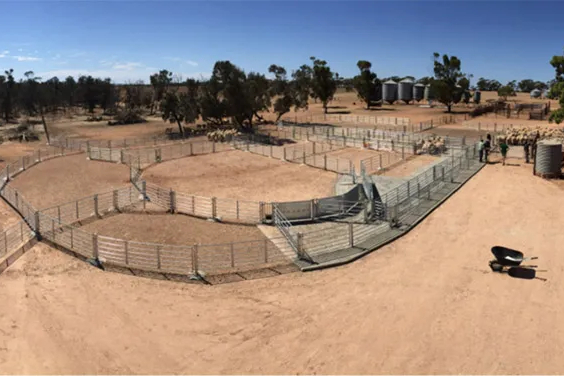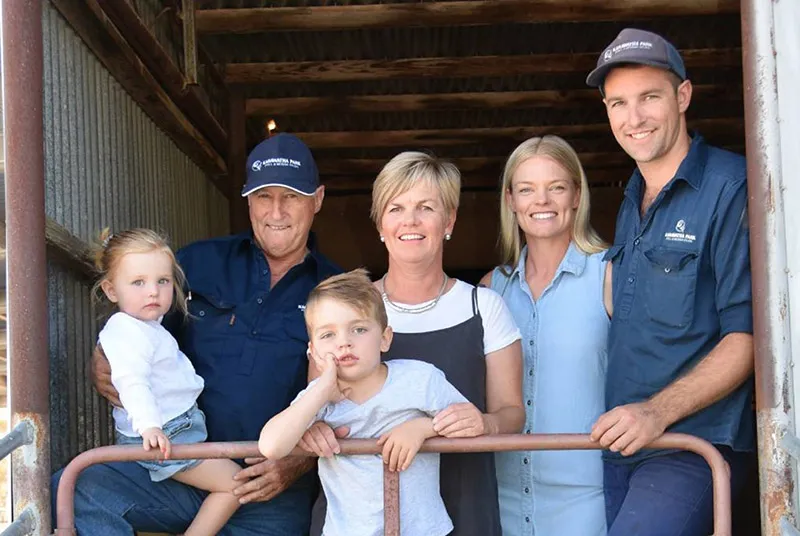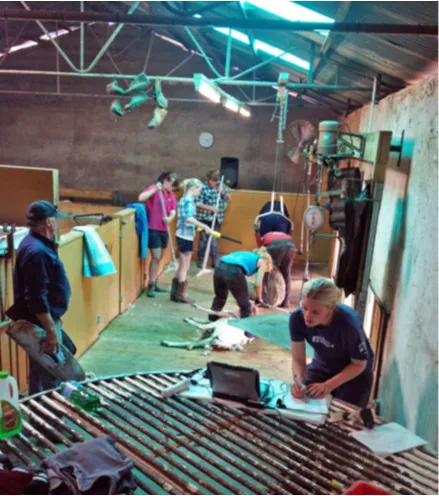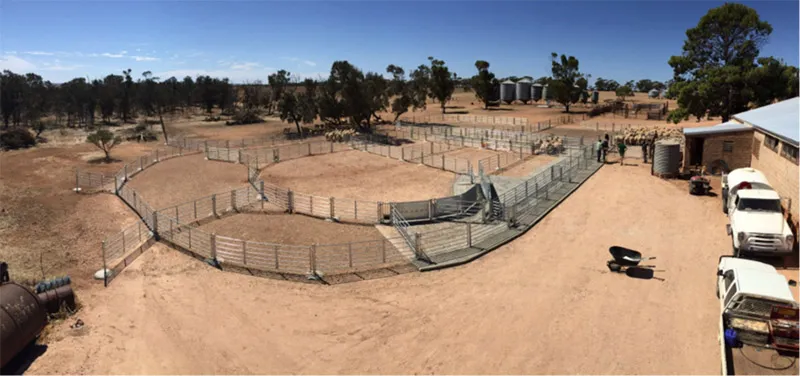Case Study: Identifying Opportunities for Improvement

Benchmarking has been a useful tool for the Woolfords to identify opportunities for improvement.
SNAPSHOT
Name: Bert & Barb, Dion & Chelsea Woolford
Location: Buckleboo/Kimba South Average
Rainfall: 300mm - 350mm
Enterprises: Seedstock Poll Merinos, Wheat, Barley & Oats (for grain & export hay)
Farm Area: 8,750 hectares (managed)
Background
Bert and Barb Woolford, together with their son Dion and wife Chelsea, manage nearly 9,000 hectares including, ”Karawatha” at Buckleboo, and “The Soaks” south of Kimba. Their mixed farming enterprise includes Karawatha Park Poll Merino Stud, a 1,700 ewe self-replacing flock, and up to 5,450 hectares of wheat, barley and oats. They also sow 1,120 hectares of vetch with barley or oats for sheep feed.
Originally moving to the area in 1928, the Woolford’s began with a wheat and sheep enterprise, and also hay. Whilst these three areas remain core in the modern-day property, the Woolford’s have strived to continually improve what and how they do things.
Identifying opportunities
The Woolford’s have been actively involved in benchmarking in various forms for the last 10 years as a tool to assist them in identifying opportunities for improvement. They were initially involved with benchmarking with the Buckleboo Sheep group. Each year members of the group benchmarked their sheep enterprise, compared results across years and businesses, and identified potential changes to improve the operation of their business.
This provided the Woolford’s the opportunity to identify the need to improve lambing percentage and stocking rates. Time of lambing, feed availability and feed quality and composition were key issues they needed to address.
The Woolford’s currently lamb in mid-May, with lambing percentages reaching 125 % depending on the season. Sowing vetch with barley or oats early has been a key strategy (identified through involvement in the group) to provide an early feed option for pregnant and lambing ewes, and assist in maintaining stocking rates. The cereal component can then be sprayed out, with the vetch providing nitrogen for a following cash crop.

Bert and Barb, Chelsea and Dion Woolford & children, Lara & George.
‘The current mix of sheep and cropping is complementary’ said Dion
The enterprise mix is a key area that the Woolford’s believe is working well. The current mix of sheep and cropping is complementary, with flexibility in rotations, health of the land is being maintained, it provides feed for the sheep, and it also provides a spread in commodity prices. With the business employing two extra full time and two part time employees, the different enterprises provide a variation in jobs for the staff. The differences in soil type and climate between the properties also helps to mitigate some of their risks.
In the past wethers have been run, providing a risk management options in poorer seasons. With a run of dry years the Woolford’s established a containment area in early 2019. This area has been used to contain stock and get them off stubbles, to protect the country. They are generally fed a mix of barley and lupins, however with the barley protein being in excess of 16% as it has been for the last 2 years, they’ve left the lupins out. Generally barley straw/header tailings are fed as the source of roughage, but good cereal hay is kept on hand in the case of a cold snap.
Business benchmarking
The Woolford’s believe ‘if you don’t measure, you can’t manage it’. Dion says ‘it gives them clarity, highlights the deficiencies, the good things, and areas we can improve on’.
These principles led the Woolford’s involvement with the Sheep Owners Academy in 2015. The Sheep Owners Academy (now Farm Owners Academy) was set-up by Kangaroo Island veterinarian and sheep consultant Greg Johnsson, together with Andrew Roberts, a business mentor. The program was established to inspire participants to look at all sides of their business for improvement, not just the technical aspects. The Woolford’s are going into their sixth year with the Academy. ‘The more information you’ve got, the more reliable the data’ says Bert.
There have been a number of areas identified for improvement through benchmarking, including labour and machinery efficiency. These areas have been improved through increased scale without needing to employ more labour or invest in more machinery.
Technology & data collection
The sheep flock has benefited through the use of technology and data collection. Whilst everything was manually weighed in the past the Woolford’s now use Bred Elite (a data recording software package), electronic ear tags and an automatic drafter to make the job easier, and data capture more accurate. The challenge for further improvement in their sheep flock however continues with Bert and Dion considering the use of DNA testing to increase accuracy and scale of dual pedigree, which in turn improves accuracy of their ASBV’s. Their main breeding objective is to gradually improve fleece weight over time, on a plain, easy care, fertile and fast growing animal.
‘The natural correlation between fleece weight and fibre diameter is negative, however with sound figures to work with and a strong focus on correct skin type, this correlation is straight forward to turn around’ said Bert.

The Woolford’s currently shear twice a year in March and September They started this practice 10 years ago when they found staple length was too long. Wool length is approximately 60 to 70 mm at each shearing. The extra cost of a second shearing is offset by not having the cost of crutching. The sheep are easier to manage and seem to do better only ever having up to 6 months wool. They cut an extra kilogram over a 12 month period, is higher yielding, and has a higher tensile strength without a mid-point break (due to not having the seasonal feed change). The discount for the shorter staple is similar to the discount received for length over 120 mm.
Dion stressed the importance of using accurate information in to get accurate information out. Having benchmarked now for a number of years, ‘we now know what info is required’ said Dion.
‘We need to continue to do it (benchmarking), and continue to identify and make improvements.’ - Bert Woolford

New sheep yards in 2020 have assisted in sheep handling and welfare
Download Case Study
Prepared by Ian McFarland, Primary Industries and Regions SA: Rural Solutions SA (2020).
Thank you to Bert and Dion Woolford for their assistance in preparing this case study.





